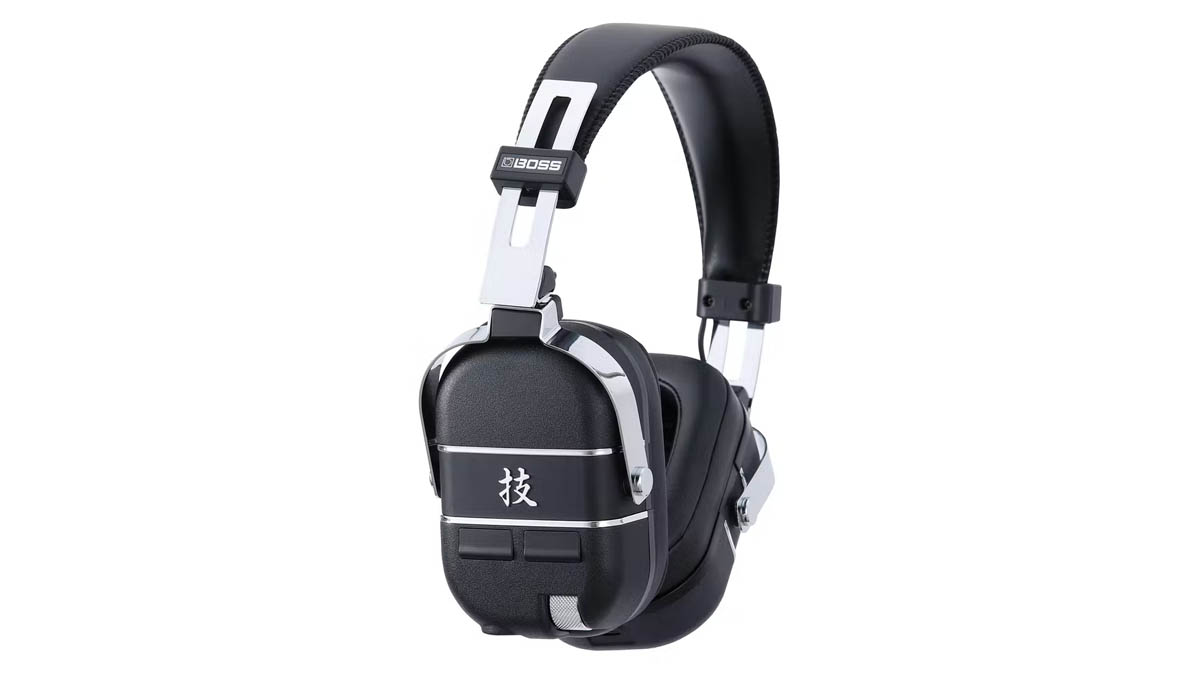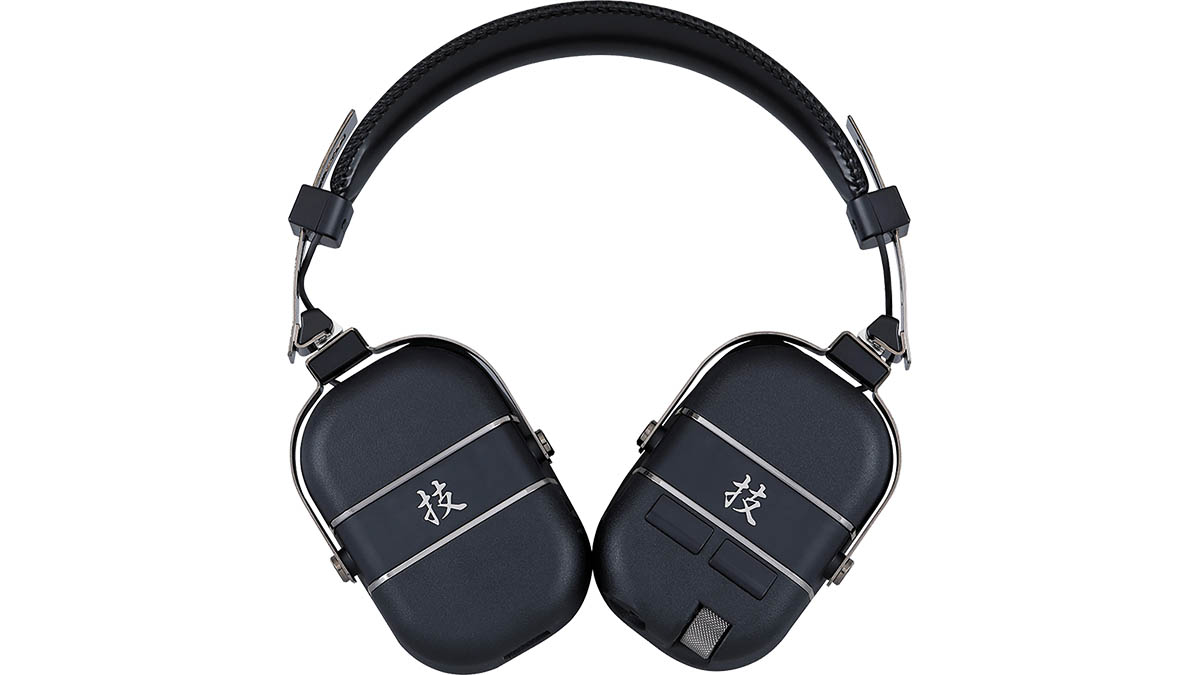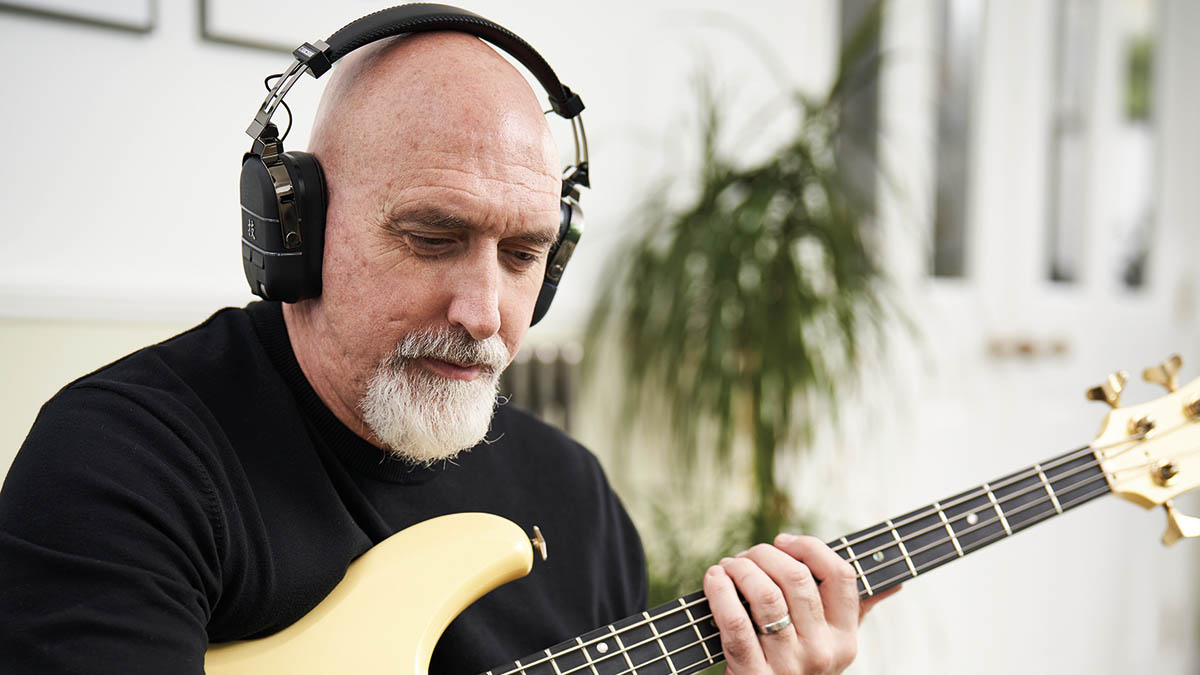Guitar World Verdict
Does its job perfectly – plugging into an amp is easier, but it's hard to imagine a better bass-in-headphones experience.
Pros
- +
Fabulous build quality and sounds.
- +
Comfortable headphones.
- +
Heaps of tonal options.
Cons
- -
Functionality may be overkill for some bassists.
- -
Pricey.
You can trust Guitar World
In bass world, there has been a clear and steady move for some years now away from amplifiers, in the sense of hefty, tube-, or solid state-powered boxes that you lug to the studio or stage and plug your instrument into.
Here at Bass Player, we’ve witnessed the rise of Class D heads, then pedal-sized bass amps, then amp-modeling units such as the Kemper, and of course amp-simulating software in a digital audio workstation or laptop. There have been a few attempts at iOS or Android-based amp apps on phones and tablets, too, with varying degrees of efficiency and take-up by the bass community.
The Waza-Air Bass system combines a lot of this backstory, as a new variant of the electric guitar version that Boss launched a couple of years ago: it’s been eagerly awaited by bassists impressed by the original product.
It comes in two parts: a chunky set of headphones, and a matchbox-sized transmitter that plugs into your bass guitar. Charge them up for three hours each via the supplied USB cable, and you’ll get five hours of use out of the headphones and 12 from the transmitter, we’re told.
The third component isn’t mandatory but it would be self-defeating not to use it: your phone or tablet, and the app that controls the system. As the Waza-Air Bass setup has multiple functions, controlling them all via the buttons on the headset would be impossible for the average sausage-fingered bassist, so you should really download the app and spend a few minutes getting to know it.

Once the phones are on your ’head, the transmitter is plugged into your jack socket and you have the app open – like you needed another reason to stare at your phone all day – you’re ready to go.
First up, the headphones feel great. This isn’t a hi-fi site, so I can’t tell you how they compare in technical terms with whatever headphones the kids are all wearing these days, but I can confirm that they feel comfortable, solid, and high-quality – as they should for their significant price tag, which we’ll come to in a moment.
The other important first impression is that it feels so, so great to walk around your practice space with no cables trailing after you, and no traditional wireless setup to worry about if you move too far away from your amp. It’s also fantastic to have nothing but your bass tones in your ears, as the headphones do a great job of blocking out extraneous noise.

In fact, the idea of walking around and playing brings me to one of the Waza system’s key features, something that Boss call “advanced spatial technology and integrated gyro sensor delivering a deeply immersive playing experience with 3D ambience and dynamic sound localization”.
In other words, your bass sound can appear to be coming from a fixed point, if you select that mode. No matter where you turn your head, it comes from the same spot ‘over there’, just like it would if you were using a real amp in a practice space or on stage. There’s a surround-sound option, too.
You can switch this feature off if you want, and in fact I didn’t really see the point of it, although I did like the room-sized reverb that can accompany this function if you wish: on the app it’s referred to as ‘Ambience’ and is quickly and effectively controllable. I suppose the idea is to emulate reality as closely as possible without having to actually plug into an amp.
Still, others may find this function more useful than I did, and anyway, I get that a lot of younger bassists are digital natives and are home studio-based.
The other big deal about this system, and the real reason to buy as I see it, is that you get to choose between five amp types and 30 customisable bass-specific effects. You get these from Tone Central, the section of the app that allows you to add single or multiple tones at a single tap.
The system allows you to play along with 10 acoustic drum grooves or a metronome that has 32 time signatures – quite an uptick on the three signatures that the average band needs you to know
You can then edit them with a bunch of simple virtual rotary controls for Gain, Volume, a three-band EQ, and the five amps mentioned above. In fact, the most fun I had with this system was when I went deep into the Effects screen and fooled around with the parameters of a ton of effects.
Not only that, the system allows you to play along with 10 acoustic drum grooves or a metronome that has 32 time signatures – quite an uptick on the three signatures that the average band needs you to know. You can operate these from the headphones if you wish, although the tiny selector you use to do this is a bit tricky to find and use. Finally, there’s a tuner, which operates more or less intuitively.
You can control all this stuff at the app, the Boss Tone Studio, or go fully down the rabbit-hole with an optional wireless MIDI pedal. The app permits you to edit, collate and download your tones, giving the user a sense of having a full-featured bass effects and practice unit at your fingertips.
As far as I can ascertain, you can’t save or export recordings, but then that’s not what this system is about – and anyway, if it sounds as if the Waza-Air will have a place in your life, you no doubt already have some form of digital recording setup.
If your intention is to use this system professionally, taking advantage of the tone and practice options and sticking with the gear for the long term, it will be a great investment
On a practical note, the phones and transmitter are perfectly portable, storing in a compact case that will cost you an extra $30 or so. The power in both units switches off automatically, which will be a godsend when, not if, you forget to turn them off.
Now, the cost. If your intention is to use this system professionally, taking advantage of the tone and practice options and sticking with the gear for the long term, it will be a great investment. If you’re thinking of giving it as a gift to a novice who may or may not stick with it, you’re risking them giving up and being left with a high-quality set of wireless headphones for the usual everyday applications.
Will the user really prefer this gear over an amp and a pedalboard? Will they really want to sit around in front of a computer, or will they want to go out and jam with real humans? The Waza-Air isn’t for everyone in that sense, so consider that before you buy.
Specs
- PRICE: $449 / £299 street
- MADE IN: China
- FEATURES: 50mm speaker drivers, power/volume/channel/function controls, charge/power/Bluetooth indicators, separate transmitter unit
- POWER: Micro USB, cable supplied
- WEIGHT: Headphones 12 oz, transmitter 2 oz
- CONTACT: Boss
Joel McIver was the Editor of Bass Player magazine from 2018 to 2022, having spent six years before that editing Bass Guitar magazine. A journalist with 25 years' experience in the music field, he's also the author of 35 books, a couple of bestsellers among them. He regularly appears on podcasts, radio and TV.
“Arguably the most convenient, immersive Spark product to date”: I've been using Positive Grid's Spark Neo guitar amp headphones for weeks – and while it's not the full Spark experience, it's got me playing guitar a lot more regularly
“Retaining the tones that made it a game-changer from the start”: The Boss Katana:GO headphone amp is back after it was discontinued – but not as you remember it














